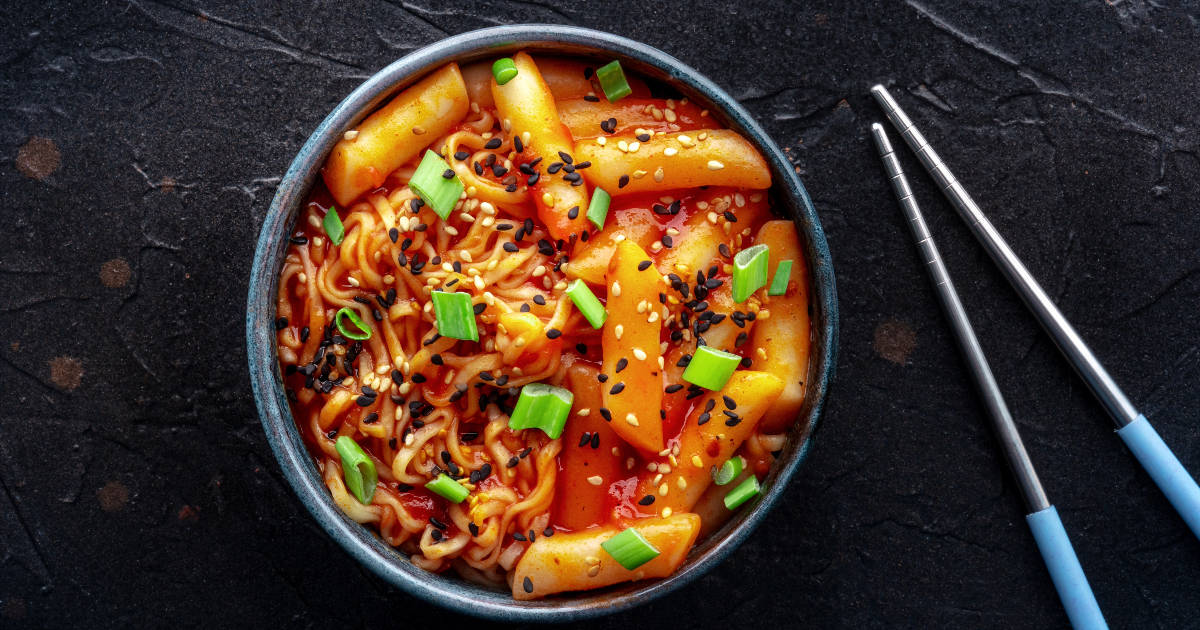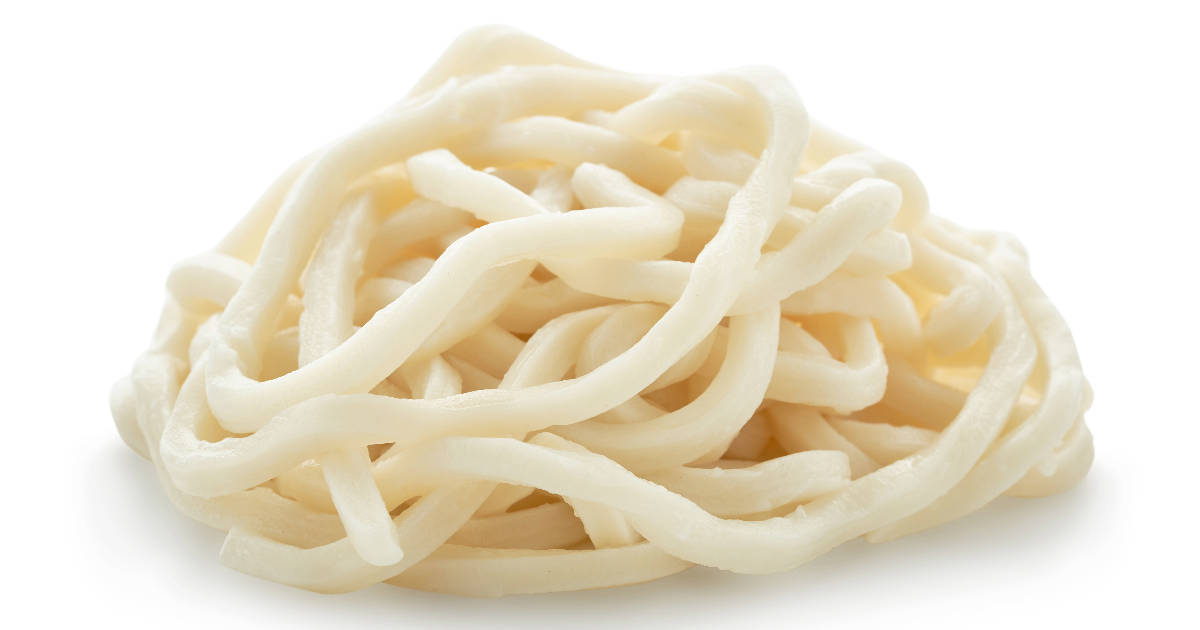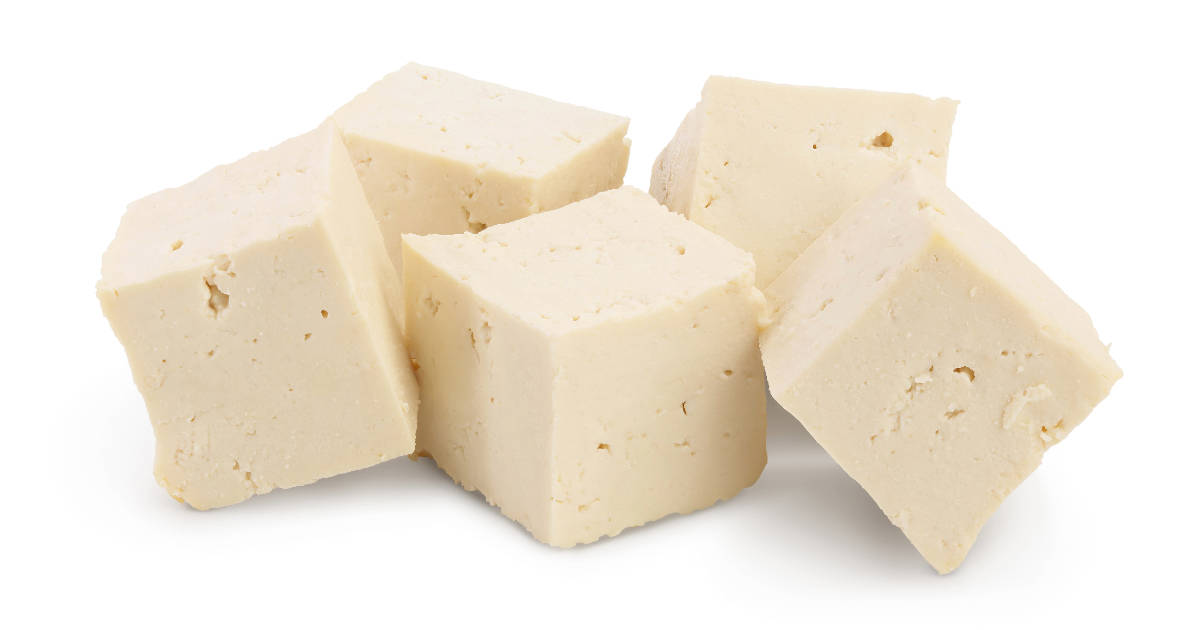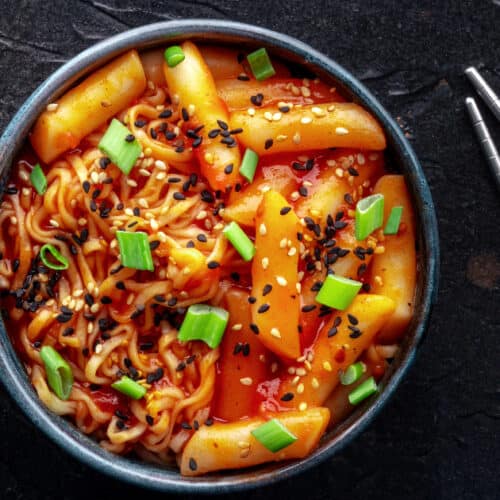Gochujang noodles are a fiery, flavorful noodle dish inspired by Korean cuisine. This recipe brings together chewy noodles, a savory-spicy sauce, and colorful vegetables for a comforting, addictive bowl of noodles you'll want to make again and again.

Made with just a handful of pantry ingredients, these noodles come together in under 30 minutes, making them a perfect weeknight dinner recipe. Read on to learn all about how to make this sensational bowl of noodles!
Understand Gochujang: The Star Ingredient
The key to amazing flavor in gochujang noodles lies in the sauce. And the star ingredient for the sauce is gochujang, a thick, pungent Korean red chili paste.
Gochujang is made from fermented soybeans, glutinous rice, red chili peppers, and salt. It brings spicy heat along with subtle sweetness and serious umami depth. When blended with other ingredients like soy sauce, sesame oil, garlic, and brown sugar, gochujang becomes an irresistible Korean-inspired sauce for noodles.
You can find gochujang at well-stocked grocery stores, Asian markets, or online. Opt for gochujang labeled "Hot" for maximum flavor impact. For even more heat, you can add Korean red pepper flakes called gochugaru as the recipe suggests.
When you taste gochujang on its own, you'll notice its unique sweet-spicy-savory complexity - and you'll understand why it makes such a fantastic base for a noodle sauce.
Choose Your Noodles Wisely

While you can use any type of noodles in gochujang noodles, chewy Asian wheat noodles like udon or ramen are ideal. Their hearty texture stands up well to the rich, clingy sauce.
Udon noodles are thick Japanese wheat noodles that have a delightfully soft, toothsome bite. Fresh udon noodles can be found refrigerated or frozen in the grocery store. Boil them briefly before tossing them with the gochujang sauce.
Ramen noodles also work beautifully. Opt for fresh ramen if you can find it, or use dried ramen and cook a minute less than the package directs so they don't get soggy.
Other great options are lo mein noodles, soba noodles, or pasta like spaghetti. Just watch dried pasta closely so it doesn't overcook.
No matter what noodles you choose, rinse them in cold water after cooking to remove excess starch and prevent overcooking. This step helps guarantee the perfect texture.
Build Flavorful Additions

One of the best parts of gochujang noodles is that you can customize them endlessly to suit your tastes and what you have on hand.
Vegetables are a must for adding nutrition and textural contrast. Onions, peppers, mushrooms, cabbage, spinach, and bok choy are all excellent stir-fry options.
For extra substance, stir in cubed tofu or strips of chicken breast. Tofu soaks up the sauce beautifully, while chicken offers hearty protein. You could also use pork or shrimp.
Topping the finished noodles with fresh herbs and crunchy garnishes makes them even more craveable. Sliced scallions, cilantro, basil, toasted sesame seeds, chili oil, and lime wedges are all fantastic options.
Let your preferences and refrigerator contents guide you in choosing vegetables and extras for your noodles. The basic components of noodles and gochujang sauce shine through any combination of mix-ins.
Make The Gochujang Noodle Sauce
The gochujang noodle sauce comes together in just a few minutes by whisking together pantry ingredients.
Ingredients:
- Gochujang paste - for spicy flavor
- Soy sauce - for salty umami notes
- Toasted sesame oil - for richness
- Brown sugar - for a touch of sweetness
- Rice vinegar - for tanginess
- Garlic - for aroma
- Water - for thinning and cooking
Simply whisk these ingredients until smooth, then let the sauce chill until the noodles are ready. The resting time allows the flavors to meld beautifully.
When you're ready to finish the dish, cook the sauce briefly to reduce it slightly and intensify the flavors. Then toss it with hot noodles and mix-ins so it coats each strand in scrumptiousness.
The gochujang sauce truly makes this noodle dish next-level delicious!
Cook The Noodles Perfectly
Achieving the right noodle texture is key for gochujang noodles. Undercooked noodles won't hold the sauce well, while overcooked noodles turn mushy.
Follow these tips:
- Fresh noodles - Boil for just 1-2 minutes to prevent overcooking.
- Dried noodles - Cook for 1 minute less than the package directs.
- Rinse - Drain and rinse noodles in cold water to stop cooking.
- Reheat gently - Add small amounts of water when reheating leftovers to restore silkiness.
Taking extra care when cooking and saucing the noodles helps ensure every bite will be chewy, flavorful perfection.
Make It A Meal
While the portions in the recipe may look small, remember that gochujang noodles are easy to expand for heartier appetites.
- Double the sauce and noodles to make a larger batch.
- Stir in extra vegetables like peppers or bok choy.
- Add a protein like baked tofu or grilled chicken breast.
- Top with a fried egg for extra richness.
- Serve with white or brown rice for a filling meal.
With endless possible additions and combinations, it's simple to turn gochujang noodles into a satisfying one-bowl dinner or lunch.
Store And Reheat Leftovers
Like many sauced noodle dishes, gochujang noodles taste even better the next day once the flavors have mingled.
To store leftovers:
- Let noodles cool completely, then transfer to an airtight container.
- Refrigerate for up to 4 days.
To reheat:
- Add a splash of water to loosen the sauce.
- Gently reheat in a pan or microwave until hot.
The noodles may be slightly less slippery after reheating, but a bit of added water helps restore their texture.
Make Them Your Own
One of the best aspects of gochujang noodles is how easily you can vary them to suit your taste.
Try out these fun options:
- Use half cabbage and half noodles for a great crunch.
- Add kimchi for tang and texture.
- Swap in rice noodles or pasta for a change.
- Top with avocado slices or a fried egg.
- Garnish with fresh herbs like cilantro or basil.
- Mix and match different proteins like tofu, shrimp, or pork.
- Adjust the spice level by changing the amount of gochujang.
Let the contents of your pantry and refrigerator guide you in crafting your own unique version of flavorful gochujang noodles.
FAQs
What kind of noodles work best for gochujang noodles?
Thick, chewy Asian wheat noodles like udon and ramen are ideal. Their hearty texture stands up well to the rich, sticky sauce. For the silkiest texture, opt for fresh udon noodles and boil briefly. Dried ramen noodles also work beautifully when cooked al dente. Rinsing the cooked noodles in cold water helps prevent overcooking.
How spicy are gochujang noodles?
It depends on the brand of gochujang used in the sauce. Some are quite mild, while others pack serious heat. Start with less gochujang paste and add more to taste if you want extra kick. You can also sprinkle on Korean red pepper flakes at the end for those who like it really spicy.
Can I add meat or vegetables?
Absolutely! Popular additions are baked tofu, chicken, shrimp, mushrooms, peppers, shredded cabbage, spinach and bok choy. Get creative with mix-ins based on what you have on hand.
How long does the gochujang sauce keep?
Store leftover gochujang sauce in an airtight container in the fridge for up to 1 week. The complex flavors will continue to develop.
What's the best way to reheat leftovers?
Gently reheat gochujang noodles in a pan with a splash of water or in the microwave. The splash of water helps loosen up the sauce. Take care not to overcook the noodles when reheating.
Conclusion
For a fast weeknight dinner that still feels special, look no further than gochujang noodles. In less than 30 minutes, you can have a bowl of noodles bursting with sweet-spicy Korean flavor on the table.
This versatile recipe also lets you add your choice of vegetables, proteins, and garnishes, so you can make it exactly how your tastebuds want. Leftovers will be kept for several days and reheated beautifully.
Next time a noodle craving hits, grab a container of gochujang and whip up a batch of these easy yet complex noodles. Your tastebuds will thank you!

Gochujang Noodles Recipe
Ingredients
For the gochujang sauce:
- 3 tbsp gochujang paste
- 2 tbsp soy sauce
- 1 tbsp toasted sesame oil
- 1 tbsp brown sugar
- 1 tbsp rice vinegar
- 2 cloves garlic, minced
- 1-2 tbsp water to thin sauce
For the noodles:
- 8 oz udon noodles
- 1 tbsp vegetable oil
- 4 cups mixed vegetables, sliced (bell peppers, carrots, cabbage, mushrooms, etc.)
- 2 green onions, sliced, extra for garnish
- 1 tbsp sesame seeds
Instructions
- In a small bowl, whisk together the ingredients for the gochujang sauce. Set aside.
- Bring a large pot of water to a boil. Cook udon noodles according to package directions until al dente. Drain and rinse noodles under cold water.
- In a large skillet or wok, heat the vegetable oil over medium-high heat. Add the sliced vegetables and green onions. Stir-fry for 4-5 minutes until starting to soften.
- Add the cooked noodles and gochujang sauce to the skillet. Toss everything together until the noodles are fully coated.
- Remove from heat. Transfer noodles to serving bowls and garnish with sesame seeds and extra sliced green onions.
- Enjoy!
Notes
- Use fresh or dried udon noodles. Cook fresh noodles for just 1-2 minutes.
- Add any combination of sliced vegetables you desire.
- For extra protein, add baked tofu, chicken, shrimp or pork.
- Refrigerate leftovers up to 4 days. Reheat with a splash of water.

